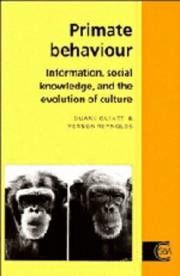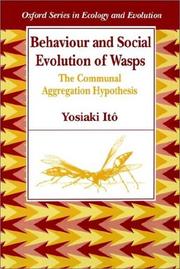| Listing 1 - 2 of 2 |
Sort by
|

ISBN: 052135255X Year: 1993 Publisher: Cambridge : Cambridge university press,
Abstract | Keywords | Export | Availability | Bookmark
 Loading...
Loading...Choose an application
- Reference Manager
- EndNote
- RefWorks (Direct export to RefWorks)
Cognition in animals. --- Primates --- Social evolution in animals. --- Behavior.

ISBN: 0198546831 0198540469 Year: 1993 Publisher: Oxford : Oxford university press,
Abstract | Keywords | Export | Availability | Bookmark
 Loading...
Loading...Choose an application
- Reference Manager
- EndNote
- RefWorks (Direct export to RefWorks)
In this book, Ito presents data on tropical wasps which suggest that kin-selection has been overemphasized as an evolutionary explanation of sociality. He concentrates on the Vespidae (paper wasps and hornets), a group much discussed by evolutionary biologists because it exhibits all stages of social evolution: subsociality, primitive eusociality, and advanced eusociality. The author reports field observations by himself and others in Central America, Asia, and Australia, showing that multiple egg-layers in a nest are not uncommon. Because coexistence of many 'queens' leads to lower relatedness among colony members than in single-queen colonies, he suggests that kin-selection may not be the most powerful force determining observed social patterns. Instead, subsocial wasps may first have aggregated for defense purposes in habitats with a high risk of predation, with mutualistic associations among many queens. Through parental manipulation and then kin selection, differentiation into within-generation castes may have followed. Of interest to all students of ecology, evolution, and behavior, this book beautifully demonstrates the author's ability to combine wide-ranging data with thoughtful questions.
Insect societies. --- Kin selection (Evolution). --- Social evolution in animals. --- Wasps --- Behavior.
| Listing 1 - 2 of 2 |
Sort by
|

 Search
Search Feedback
Feedback About UniCat
About UniCat  Help
Help News
News